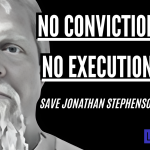
The inner critic is not the voice in your head.
(At least not for most of us.)
In our culture, we have this image of the inner critic as a monolithic homunculus in our minds, shouting about our worthlessness around every corner. Here’s the problem: the inner critic is unique for each of us and shows up in infinitely creative ways.
While it might be a singular voice for some people, it often shows up with a multitude of voices, vibes, gut feelings, and images.
The inner critic is not one part of us; it’s a collection of parts, all tasked with protecting us from the dangers of the world.
And this is why we can’t destroy the inner critic within us; it’s trying to protect us!
Instead, our task is to take a “long, loving look” at it within the context of our inner lives, and then learn to defuse it of its power.
Here are 3 way tools to help you listen to and then move beyond your inner critic.
1. Shadow Work
The psychoanalyst Carl Jung theorized that each of us has within us a “shadow.” These are the parts of ourselves we would prefer to ignore, evade, and avoid.
- Inner narratives,
- behaviors,
- beliefs,
- and so on.
The inner critic is the monarch of our personal shadow spaces.
But we don’t only have personal shadows – we also have communal and societal shadows as well. And these shadows, the parts of ourselves, our communities, and our societies, are constantly impacting the ways we see and understand the world around us.
These shadows, when left unexamined, keep us from from being present to our lives.
This is where shadow work comes in.
Shadow work is a process of increasing our capacity to be aware of and in connection with our shadows, not to destroy them, but to hold them in gentleness and care.
If shadow work isn’t done, we will largely continue to perpetuate the status quo. We will allow our inner critic to carry us along the waves of our lives and never sink beneath the surface. Some may describe this experience as operating on autopilot or becoming numb to everything around and within us.
It is through this gentle shadow work that new experiences of presence and life become possible.
If you’re interested in engaging with shadow work for yourself, here is my free 5-day email series guiding you gently in this exploration.
2. Somatic Work
“Somatic” is a new word for many of us in Western culture, but the concept is pretty intuitive.
Each of us has a body and our bodies carry the stories of our lives. They aren’t just vehicles for our brains, which was unfortunately what many of us were taught. Instead, they hold our experiences of the world through muscle tension, blood pressure, trauma responses, gut reactions, and so on.
Our bodies have a form of knowledge that our minds simply don’t – and this body knowledge is key for us facing our inner critic.
Think back to when you were a school-age student:
Imagine yourself in the classroom facing down a difficult task.
As you look up from your work, you can see students all around you finishing, turning in the test or the essay, and moving onto the next step. And yet – here you are…barely computing the figures on the page.
What makes this worse: it happens every day. It’s to be expected: you’re just not as smart as the other kids.
And so as student after student walks up and turns in the assignment, your shoulders tense more and more, your head hangs lower and lower, until finally you just collapse your head onto the table and go to sleep.
(The teacher, knowing none of what is happening in your body or mind, sees this and reprimands you, just intensifying the feelings of inferiority.)
This experience is played out again and again in our school system every day.
And it’s not just a matter of willpower, pulling oneself up by their bootstraps, or “kids these days.” The student in this scenario – perhaps yourself – was having a somatic (body-based) response to the pressures of both the inner critic and the outer world.
So how can we interrupt this process and work with our body knowledge to defuse the power of our inner critic?
Somatic work is the process of grounding and settling your body, learning to listen to the language of its knowledge. If you can take time to become acquainted with your body, you can begin to change these default responses.
Here are three questions to get you started with somatic work right now and a couple resources to go further.
- Where are you carrying tension right now?
- When you are afraid, what does your body do?
- When you are entirely relaxed, how does your body shift?
Resources:
- Embodied Story (online course)
- Foundations in Somatic Abolitionism
3. Contemplative Meditation/Prayer
The inner critic thrives on fragmentation, isolation, and distance.
Contemplative meditation, on the other hand, invites us to become acquainted with the Divine within each of us. It is through silence and intentionality that we create space for the “sound of the genuine,” as Howard Thurman referred to it, to be heard and engaged with.
A contemplative posture in the world and toward ourselves fundamentally changes the inner critic’s ability to convince us of our ineptitude. It replaces the inner critic’s messages that we are unworthy with the experiential knowledge of our goodness.
Contemplative spirituality isn’t about doctrines or belief systems; it is about sinking into a depth of Presence here in the current moment that allows us to feel and experience the Divine.
Here are a couple resources that might support you if you’d like to engage contemplative practices.
- Closer Than Breath
- Tia Norman (Insight Timer)
- Center for Action and Contemplation’s Daily Meditations
Want practical inner work teachings and resources every week?
Join 471+ folks receiving The Wednesday 1-2-3, my weekly email offering one contemplative and embodied teaching, two questions for your inner work, and three resources to go deeper.

















